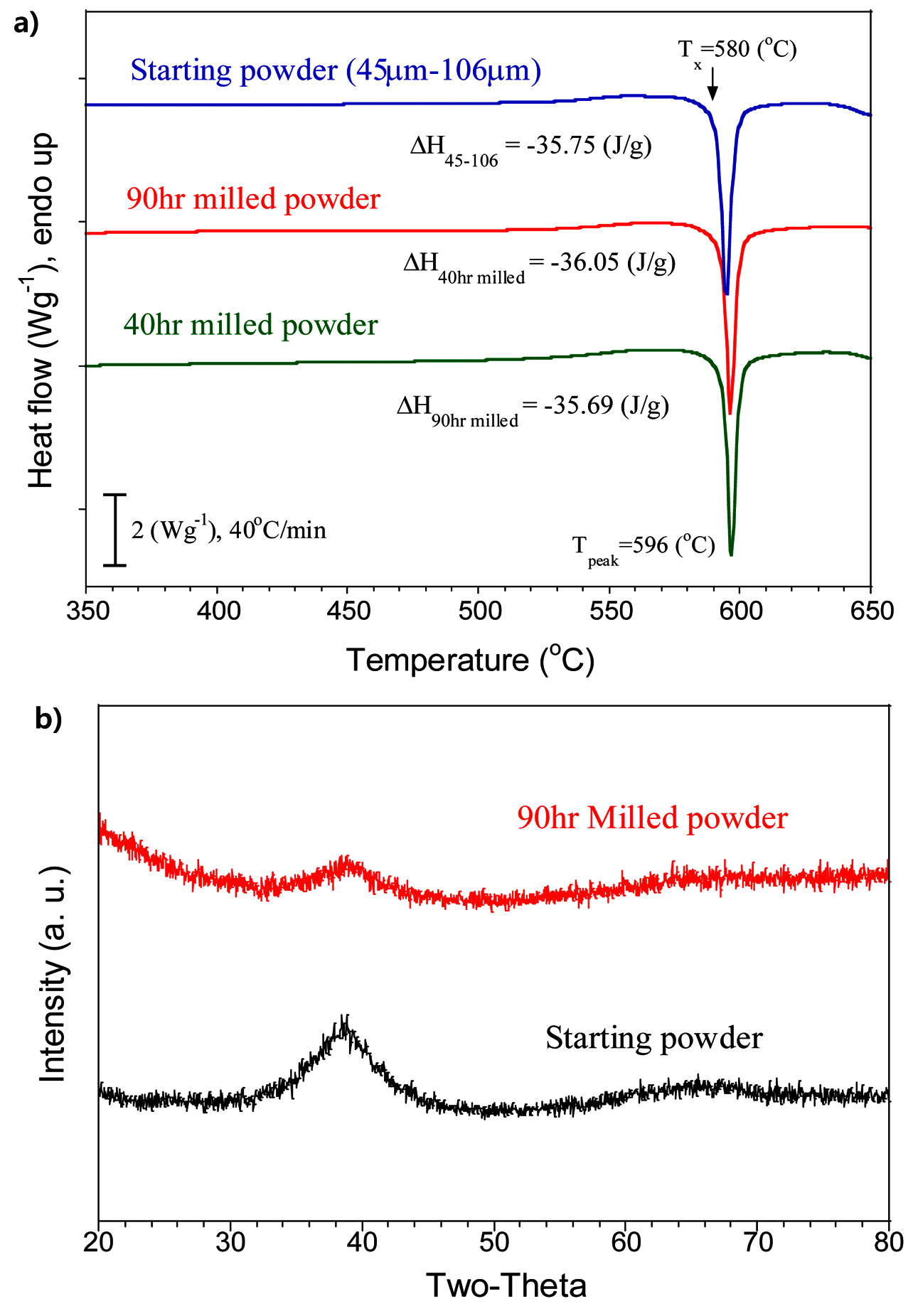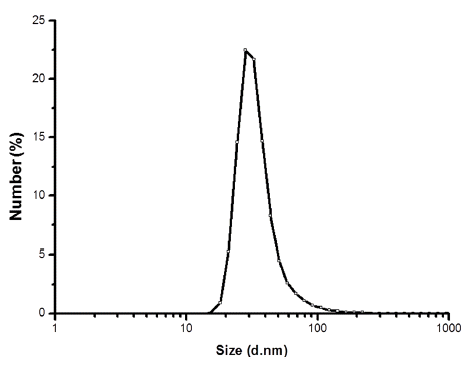Search
- Page Path
- HOME > Search
- [Korean]
- Micro-deformation behavior of Brittle Hf-based Metallic Glass during Mechanical Milling
- Song-Yi Kim, A-Young Lee, Eun-Ji Cha, Do-Hun Kwon, Sung-Uk Hong, Min-Woo Lee, Hwi-Jun Kim, Min-Ha Lee
- J Korean Powder Metall Inst. 2018;25(3):246-250. Published online June 1, 2018
- DOI: https://doi.org/10.4150/KPMI.2018.25.3.246

- 523 View
- 2 Download
-
 Abstract
Abstract
 PDF
PDF In this study, we investigate the deformation behavior of Hf44.5Cu27Ni13.5Nb5Al10 metallic glass powder under repeated compressive strain during mechanical milling. High-density (11.0 g/cc) Hf-based metallic glass powders are prepared using a gas atomization process. The relationship between the mechanical alloying time and microstructural change under phase transformation is evaluated for crystallization of the amorphous phase. Planetary mechanical milling is performed for 0, 40, or 90 h at 100 rpm. The amorphous structure of the Hf-based metallic glass powders during mechanical milling is analyzed using differential scanning calorimetry (DSC) and X-ray diffraction (XRD). Microstructural analysis of the Hf-based metallic glass powder deformed using mechanical milling reveals a layered structure with vein patterns at the fracture surface, which is observed in the fracture of bulk metallic glasses. We also study the crystallization behavior and the phase and microstructure transformations under isothermal heat treatment of the Hf-based metallic glass.
- [English]
- Fabrication of Core-Shell Structured Ni-Based Alloy Nanopowder by Electrical Wire Explosion Method
- A-Young Lee, Gwang-Yeob Lee, Hye-Ryeong Oh, Hyeon-Ah Kim, Song-Yi Kim, Min-Ha Lee
- J Korean Powder Metall Inst. 2016;23(6):409-413. Published online December 1, 2016
- DOI: https://doi.org/10.4150/KPMI.2016.23.6.409

- 641 View
- 1 Download
-
 Abstract
Abstract
 PDF
PDF Electrical wire explosion in liquid media is a promising method for producing metallic nanopowders. It is possible to obtain high-purity metallic nanoparticles and uniform-sized nanopowder with excellent dispersion stability using this electrical wire explosion method. In this study, Ni-Fe alloy nanopowders with core-shell structures are fabricated via the electrical explosion of Ni-Fe alloy wires 0.1 mm in diameter and 20 mm in length in de-ionized water. The size and shape of the powders are investigated by field-emission scanning electron microscopy, transmission electron microscopy, and laser particle size analysis. Phase analysis and grain size determination are conducted by X-ray diffraction. The result indicate that a core-shell structured Ni-Fe nanopowder is synthesized with an average particle size of approximately 28 nm, and nanosized Ni core particles are encapsulated by an Fe nanolayer.
TOP
 KPMI
KPMI

 First
First Prev
Prev


